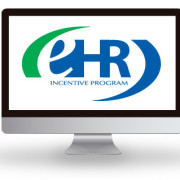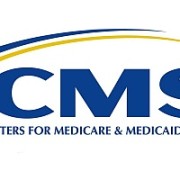4 Tips to Get Through the New Meaningful Use Reporting Period
The New Year is well under way and just as most of you are in the middle of attesting for your 2014 meaningful use reporting period, the new 2015 reporting period has begun and this time, it is potentially a full year. Other than being four times longer in duration than the required 2014 period, what does that mean to you?
1. There are key differences in MU 1 and MU2; understand them.
For those attesting to MU 2 for the first time, it is important to understand what has changed from MU 1. Some menu measures are now required as core measures, thresholds have increased and core measures themselves have gone under reconstruction. For example, the core measure in MU 2 regarding CPOE now requires a certain percentage of labs and radiology orders be placed via CPOE along with medications AND the medications threshold has doubled. CMS has created a comparison table to help you navigate those differences for all of the measures
2. Exclusions you might have previously qualified for may no longer apply to you.
Because the 2015 reporting period now consists of an entire calendar year as opposed to the 90 day period we all saw in 2014, many of the exclusions that rely on lower numbers will be harder for EPs to qualify for. Consider looking at your numbers of orders, visits and other measurements in regards to measures you previously were exempt for in 2014. If an EP was able to be exempt for the imaging results measure in 2014 because they only ordered 97 images in the 90 day period, there is a pretty good chance they will surpass that 100 order minimum for the measure exemption in a full year. Someone who only ordered 10 or so images in the 90 day period might still order less than 100 images in the year and therefore, still qualify and not have to attest to that required measure threshold. Taking a look at these measures now will ensure more time to verify workflows and any other things necessary to make sure you are in a good place to meet and exceed these measures.
3. Check your reports frequently.
The longer reporting period will result in higher overall numbers across the board. A measure you previously reported on 150 patients will likely jump to 500 or 600. Checking your reports monthly will help identify possible problems in clinical workflows that impact your meaningful use numbers sooner and while there is still time to correct the possible issue. A denominator of 150 people is much easier to correct in a shorter period of time than a denominator of 600.
For example, if an EP is struggling to meet the MU2 Core Measure 13, Patient Education, with a score of 5% and has a denominator of 200 patients seen in the reporting period, increasing their numbers to over 10% (the required threshold to meet the measure) should only take about 11 patients for course correction. A provider with the same percentage of patients provided education (5%) but with a denominator of 800 patients will need to provide education to at least 45 patients to meet the minimum threshold of the measure. Now imagine this same scenario with higher threshold measures. The numbers can stack up fast. This is why routine report checking is suggested throughout the entire calendar year. Making up larger numbers requires more time.
4. Patient Engagement; the earlier, the better.
Like all other suggestions above, getting a head start on measures requiring patient engagement is key. Do not let the low thresholds of these measures fool you. Many EPs who were attesting for MU 2 in 2014 found it difficult to get the numbers required for patient engagement. Getting patients to send messages to their providers requires that the patient have already been offered registration to the portal and registered themselves and only then can a message be sent. Working on these hidden steps earlier in the year will make it easier to meet those measures throughout the year.
What does this proposed rule change mean to our 2015 Meaningful Use reporting period?
In the last few days of January 2015, CMS released a notice of several possible changes to the incentive EHR program for 2015; one of them reducing the reporting period to 90 days. (Take a look at our recent blog for more information). So, why continue to attempt for the full year? Even though the discussion on shortening the reporting period has started, it is important to stay on track for the full year. These are tentative changes to the incentive program rules, and until finalized, Eligible Professionals are still required to attest for an entire calendar year. Secondly, attempting to attest for an entire year will give you a larger date range to choose your optimal 90 days from if the reporting period ultimately is reduced. Staying on track with forward progress in regards to your meaningful use objectives is the best option in ensuring successful reporting later in the year.




